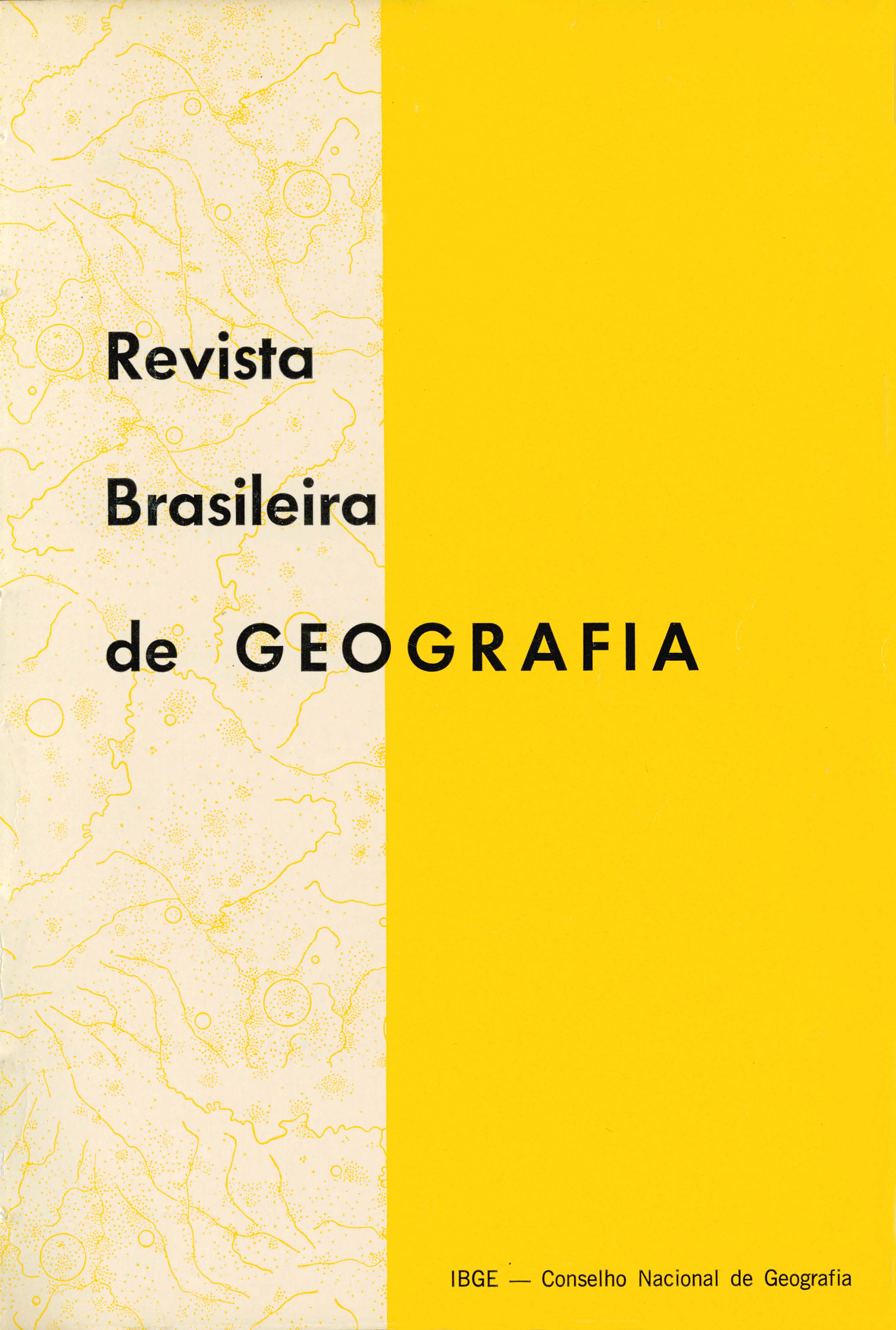Polos de desenvolvimento no Brasil : uma metodologia quantitativa e uma exemplificação empírica
Keywords:
Geografia urbana, Desenvolvimento econômico, Geografia quantitativa, Planejamento urbano, UrbanizaçãoAbstract
In the present article the author introduces in the analysis of urban centers a quantitative methodology, having in mind their polarization capacity. Added to this methodology is the study of Brazilian examples, derived from the analysis of city systems, just as much with regard to their general characteristics as with their industrial structure, and in respect to the national level as well as to the level of two regions the Center-South and the North-Northeast.
According to the program (known as the "Optimal Origin Point" elaborated by the Geographic Department of the University of Ohio), the polarization capacity of a given point is determined by the correlation between the magnitudes of all the points and the distances between each. This correlation is calculated in three successive approximations, the first in a reticulation of 15xl5, the second in one of l0xl0 and the third in a final reticulation of 8x8, in which the point can already be identified. The distances are calculated starting from the co-ordinates of the places and transformed, for normalization purposes, the same process applied to the magnitude of the places.
Once the highest correlation has been determined and the point duly identified, it is considered a pole, and according as the correlation rises to a greater or lesser degree, the signification of the pole is greater or lesser. Following this, a Regression is performed, considering the pole as the optimal point of origin, in order to determine the magnitudes of the points, starting from the first pole, considering as area polarized by this latter, all those points whose estimated values are above zero, with decreasing intensity in proportion to lessening of the estimated value. The residues of the Regression are them utilized for a new analysis, thus continuing in iterative form until apportionment thereof becomes aleatory.
The exaniples employed of cities and the industrial structure of these latter, show some significative aspects; the most important being that São Paulo and Rio de Janeiro seem to be well differentiated as national metropolises, but São Paulo as a much more significant regional metropolis. On the other hand, in so far as the industrial structure is concerned, São Paulo appears with a much more important national function than regional, whereas Rio de Janeiro suffers no alteration in its national-versus-regional relative position.
The methodology submitted, considering the examples offered, indicates a much more proficient line for the analysis of the Brazilian urban system, although changes are still necessary in order to improve the definition of the poles magnitude as well as transformations of distances.






